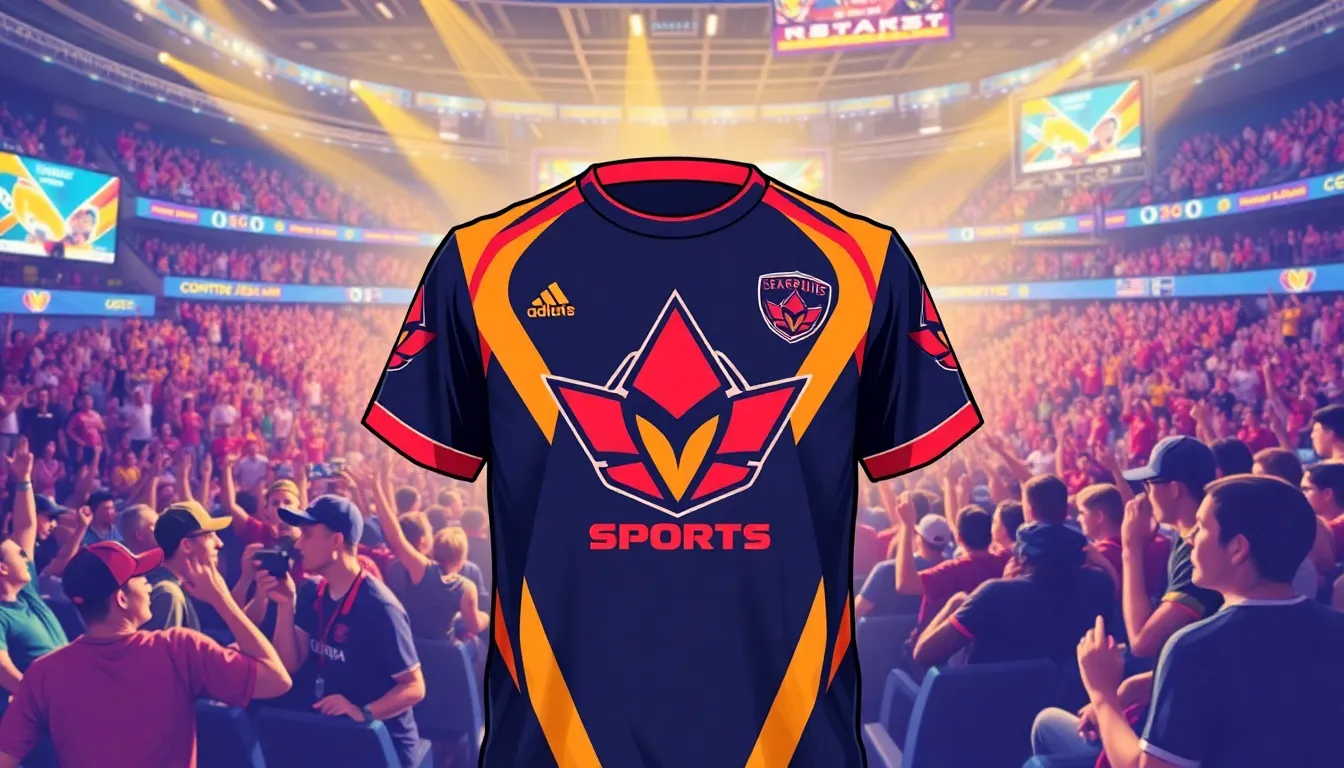The Best Fluffy Pancakes recipe you will fall in love with. Full of tips and tricks to help you make the best pancakes.

How Do Esports Teams Make Money? Discover the Secrets Behind Their Revenue Streams
In the fast-paced world of esports, where gamers become legends overnight, the question of how teams actually make money is as thrilling as a last-minute victory. Forget the old stereotypes of basement-dwelling gamers; these players are raking in cash faster than you can say “headshot.” With prize pools that rival traditional sports and sponsorship deals that would make any athlete’s head spin, esports teams have mastered the art of monetization.
From streaming platforms to merchandise sales, the revenue streams are as diverse as the games themselves. It’s not just about playing; it’s about creating an empire. So, whether you’re a die-hard fan or just curious about this digital gold rush, buckle up. This journey through the financial side of esports is sure to be as entertaining as a nail-biting championship match.
How Do Esports Teams Make Money
Esports teams operate in a dynamic environment, relying on multiple revenue streams for financial success. Sponsorship deals represent a significant income source, with brands eager to associate with popular teams and players. Teams partner with gaming-related and non-gaming companies, leveraging their visibility for promotional campaigns.
Prize pools also contribute to team finances. Major competitions offer substantial cash rewards, attracting top talent and increasing overall audience engagement. Winning tournaments boosts a team’s reputation, leading to future sponsorship opportunities and fan support.
Merchandise sales add another layer of monetization. Teams sell apparel, accessories, and in-game items, capitalizing on their brand and engaged fanbase. Fans wear merchandise proudly, helping to spread brand awareness and loyalty.
Streaming platforms play a key role in revenue generation. Esports teams often host live streams where players showcase their skills. Viewership on platforms like Twitch creates opportunities for ad revenues and subscriptions.
Content creation further enhances visibility and monetary gain. Teams produce videos, podcasts, and social media posts, connecting with fans while driving additional income through sponsorships and advertising partnerships. Engaging content fosters a loyal community around teams.
Esports teams benefit from diverse financial avenues. By leveraging sponsorships, prize pools, merchandise, streaming, and content creation, they establish sustainable business models. Understanding these components illustrates the vibrant ecosystem of esports teams and their strategies for generating revenue.
Revenue Streams for Esports Teams

Esports teams generate revenue through various channels that capitalize on their popularity and community engagement. Sponsorships, merchandise, and streaming represent some of the primary sources of income.
Sponsorship Deals
Sponsorship deals form a crucial part of an esports team’s revenue. Brands eager to reach a young and engaged audience often partner with popular teams. These deals can range from jersey sponsorships to product endorsements. The array of sponsorships creates significant financial support for teams, allowing them to invest in talent and resources. Top-tier events often showcase these partnerships, enhancing visibility for both brands and teams.
Merchandise Sales
Merchandise sales contribute significantly to the overall revenue. Teams offer a variety of products, including apparel, accessories, and in-game items. Fans often purchase these items to show support and loyalty. This creates a continuous income stream for teams while enhancing brand recognition. Limited-edition merchandise generates additional hype during major tournaments, driving sales and engagement among audiences.
Streaming and Content Creation
Streaming and content creation drive additional income for esports teams. Platforms like Twitch and YouTube provide avenues for live streaming and video uploads. Streamers generate revenue through subscriptions, ads, and viewer donations. Engaging content helps teams foster a loyal fan base, which translates into additional income opportunities. Regular content updates keep audiences engaged and attract new fans, further enhancing financial potential.
Tournament Earnings
Esports teams earn significant income from tournaments through various avenues. Prize money and associated sponsorships form the core of these earnings.
Prize Money
Prize money represents a substantial portion of a team’s revenue in competitive gaming. Major tournaments offer prize pools that can reach millions of dollars, attracting top-tier competitors. For instance, The International 2021 featured a prize pool of over $40 million. Teams that progress through tournament brackets enhance their earnings as they secure higher placements. Winning or even placing well in these events boosts a team’s visibility and appeal, leading to new sponsorship opportunities. Competitive success not only brings financial rewards but also elevates a team’s reputation.
Sponsorships Related to Tournaments
Sponsorships related to tournaments enhance financial support for esports teams. Brands often seek partnerships with successful teams to leverage their popularity. These partnerships can lead to lucrative deals that cover team expenses, including travel and equipment costs. Companies frequently advertise during tournaments, increasing their visibility. For example, brands might sponsor specific tournaments or provide in-game promotions. Through these partnerships, teams gain additional resources while brands tap into a dedicated fanbase. Such collaborations create a mutually beneficial ecosystem that accelerates growth in the esports industry.
Advertising Revenue
Advertising revenue stands as a vital income stream for esports teams. They leverage various platforms to attract advertisers and maximize their reach.
In-Game Advertising
In-game advertising often appears as branded content within video games. These ads can manifest as products, billboards, or banners that enhance the gaming experience while generating revenue. Teams partner with game developers to integrate these advertisements seamlessly. Visibility during gameplay captures a significant audience, leading to lucrative deals with brands aiming to target gamers. Major publishers, such as Activision and Electronic Arts, frequently implement in-game ads, creating additional revenue opportunities for teams.
Brand Partnerships
Brand partnerships extend beyond mere sponsorships. Teams collaborate with companies to create unique marketing campaigns that resonate with fans. These partnerships can involve co-branded merchandise and exclusive promotional events. For instance, esports teams might work with tech firms, beverage brands, or energy products. Each collaboration boosts visibility and helps both parties reach mutually beneficial marketing goals. As esports popularity surges, brands actively seek partnerships, establishing valuable connections within this rapidly expanding market.
Future Trends in Esports Revenue
Growth in esports revenue relies heavily on emerging trends. Subscription models for fans continue to gain traction, allowing teams to monetize their dedicated follower base through exclusive content. Digital collectibles like non-fungible tokens (NFTs) present a new avenue for revenue, offering fans unique ownership experiences that can command high prices.
Brands are increasingly investing in esports advertising. Expanding their reach into esports helps brands connect with younger, tech-savvy audiences. These companies initiate tailored marketing campaigns that resonate with gaming communities, creating a symbiotic relationship that enhances mutual visibility.
Collaborations with traditional sports leagues may also shape the esports landscape. Partnerships can elevate brand status, allowing esports teams to leverage established audiences from mainstream sports. Teams often align with familiar franchises, increasing their credibility and expanding potential revenue streams.
Data analytics will play a crucial role in optimizing revenue strategies. As esports teams analyze audience behavior and engagement metrics, they can refine sponsorship proposals and targeted marketing strategies. This data-driven approach ensures teams maximize their outreach and drive increased financial support.
Additionally, virtual reality (VR) and augmented reality (AR) technology are set to revolutionize fan engagement and experience. Enhanced viewing experiences not only deepen audience connections but also attract new sponsors looking for innovative advertising opportunities. As teams integrate these technologies, they position themselves to capture more significant market share.
Overall, these trends indicate a dynamic future for esports revenue. Innovations in monetization strategies and audience engagement tactics continuously reshape how esports teams generate income in this rapidly evolving industry.
Conclusion
Esports teams are navigating a thriving financial ecosystem that’s constantly evolving. By leveraging multiple revenue streams like sponsorships and merchandise sales they’re not just surviving but thriving in a competitive landscape. The rise of streaming platforms and innovative monetization strategies continues to reshape how these teams engage with fans and brands alike.
As the industry grows the potential for new revenue opportunities expands. With advancements in technology and audience engagement strategies esports teams are well-positioned to capitalize on emerging trends. This dynamic environment promises an exciting future for both teams and their supporters as they explore new ways to connect and generate income.
